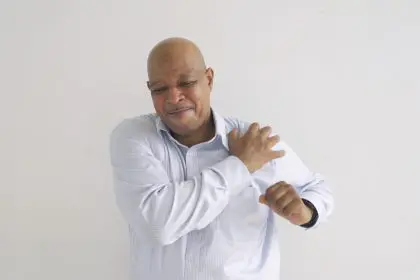Heart attacks don’t typically strike without warning. While movies and television often portray cardiac events as sudden, dramatic collapses, the reality is far more nuanced. The human body frequently sends distress signals weeks or even months before a major cardiac event occurs, offering precious opportunities for intervention and prevention.
Understanding these early warning signs can mean the difference between life and death. The month leading up to a heart attack often brings a cascade of subtle yet significant changes that many people dismiss as normal aging, stress, or minor health issues. Recognizing these patterns and taking them seriously can provide the crucial window needed for medical intervention.
The cardiovascular system doesn’t fail overnight. Instead, it undergoes a gradual deterioration that manifests through various physical and emotional symptoms. These warning signs represent the body’s desperate attempts to communicate that something is seriously wrong with the heart’s ability to function effectively.
1. Persistent and unusual fatigue
One of the most common yet overlooked warning signs is an overwhelming sense of exhaustion that doesn’t improve with rest. This isn’t the typical tiredness that comes from a busy day or poor sleep. Instead, it’s a profound fatigue that seems to penetrate every aspect of daily life.
This exhaustion occurs because the heart struggles to pump blood efficiently, forcing the body to work harder to maintain basic functions. Simple activities that once felt effortless suddenly become challenging. Climbing stairs, carrying groceries, or even walking short distances may leave someone feeling completely drained.
The fatigue often worsens progressively over the course of several weeks. People may find themselves needing to rest more frequently during the day or requiring longer recovery periods after minimal exertion. This type of fatigue is particularly concerning when it appears without explanation in individuals who previously maintained active lifestyles.
Women may experience this symptom more prominently than men, often describing it as feeling like they’re “running on empty” or experiencing a heavy sensation throughout their body. The fatigue may be accompanied by a general sense of weakness that affects both physical and mental capabilities.
2. Chest discomfort that comes and goes
While severe chest pain is widely recognized as a heart attack symptom, the preceding weeks often bring more subtle chest sensations. These may include mild pressure, tightness, or a feeling of fullness in the chest area that appears and disappears unpredictably.
The discomfort might feel like someone is sitting on the chest or like wearing an overly tight garment. It may last anywhere from a few minutes to several hours, often subsiding completely before returning later. This intermittent nature causes many people to dismiss it as stress-related or muscular in origin.
The sensation may not be particularly painful, which leads many to underestimate its significance. Some describe it as a vague awareness of their chest or a feeling that something isn’t quite right in the chest area. The discomfort may worsen during physical activity or emotional stress, then improve with rest.
Location can vary significantly between individuals. While some feel it directly over the heart, others experience it more centrally in the chest or even slightly to the right. The key distinguishing factor is that the sensation is new and different from anything previously experienced.
3. Shortness of breath with minimal exertion
Breathing difficulties that seem disproportionate to the level of activity often signal impending cardiac problems. This symptom typically develops gradually, with people initially noticing slight breathlessness during activities that previously caused no difficulty.
The shortness of breath may occur while walking up a single flight of stairs, carrying light objects, or even during normal conversation. Unlike respiratory conditions that might cause similar symptoms, this breathlessness is often accompanied by a sense that the heart is working harder than it should be.
Many people adapt to this symptom by unconsciously reducing their activity level, which masks the progression of the underlying problem. They may start taking elevators instead of stairs, parking closer to building entrances, or avoiding activities that require sustained effort.
The breathing difficulty may be particularly noticeable when lying flat, causing some individuals to sleep with extra pillows or in a reclining chair. This positional component occurs because the heart struggles more when working against gravity to circulate blood throughout the body.
4. Unexplained nausea and digestive issues
Gastrointestinal symptoms appearing without obvious cause can indicate cardiac problems, particularly in women. These may include persistent nausea, unexplained loss of appetite, or a general feeling of digestive unease that doesn’t respond to typical remedies.
The nausea may be mild but constant, creating a persistent feeling of queasiness that affects eating habits and overall well-being. Some individuals experience a metallic taste in their mouth or find that foods they normally enjoy suddenly seem unappealing.
Digestive symptoms may also include unexplained heartburn or indigestion that doesn’t follow typical patterns. The discomfort may occur at unusual times, such as when the stomach is empty, or may not respond to antacids or dietary changes that normally provide relief.
These symptoms often coincide with the body’s stress response to cardiovascular compromise. The digestive system receives reduced blood flow as the body prioritizes circulation to vital organs, leading to various gastrointestinal disturbances that seem unrelated to heart problems.
5. Increased heart rate and palpitations
Changes in heart rhythm or rate often precede major cardiac events. People may notice their heart beating faster than normal during rest periods or experience irregular heartbeats that feel like skipping, fluttering, or pounding sensations.
These palpitations may occur sporadically throughout the day, sometimes lasting only a few seconds but appearing with increasing frequency. The heart may seem to race during activities that previously caused no increase in heart rate, or irregular beats may be noticeable during quiet moments.
Some individuals become acutely aware of their heartbeat in situations where they previously never noticed it. This heightened awareness often reflects the heart’s struggle to maintain adequate circulation as cardiovascular function declines.
The palpitations may be accompanied by a sense of anxiety or unease, even when there’s no apparent reason for stress. This occurs because irregular heart rhythms can trigger the body’s fight-or-flight response, creating emotional symptoms that seem disconnected from physical causes.
6. Sleep disturbances and restlessness
Sleep patterns often change significantly in the weeks before a heart attack. Many people experience difficulty falling asleep, frequent awakening during the night, or early morning awakening that prevents adequate rest.
The sleep disruption may stem from physical discomfort, anxiety, or the body’s increased stress response to cardiovascular compromise. Some individuals find themselves waking up feeling like they can’t catch their breath or with a racing heart that makes it difficult to return to sleep.
Restlessness during sleep may manifest as tossing and turning, difficulty finding a comfortable position, or vivid, disturbing dreams. The quality of sleep deteriorates even when the total amount of sleep time remains adequate, leading to daytime fatigue and irritability.
Position-related sleep difficulties may develop, with some people finding they can only sleep comfortably in certain positions or requiring extra pillows to breathe easily while lying down. This postural component often reflects the heart’s reduced ability to pump blood effectively against gravity.
7. Unusual sweating patterns
Excessive sweating that occurs without obvious cause can indicate cardiovascular stress. This may include breaking out in a cold sweat during minimal activity, night sweats that disrupt sleep, or sudden episodes of profuse sweating that seem unrelated to temperature or exertion.
The sweating may have a different quality than normal perspiration, often described as clammy or cold rather than the warm moisture associated with exercise or heat. It may occur predominantly on specific areas of the body, such as the palms, forehead, or upper body.
Episodes of unusual sweating may coincide with other symptoms like mild chest discomfort or shortness of breath, creating a constellation of signs that indicate cardiovascular distress. The sweating may be particularly noticeable during emotional stress or physical activity.
Some individuals experience sudden onset of sweating that seems to come from nowhere, lasting several minutes before subsiding. These episodes may become more frequent as the cardiac event approaches, representing the body’s response to the increased workload on the cardiovascular system.
8. Persistent back, neck, or jaw pain
Pain in areas seemingly unrelated to the heart can actually indicate cardiac problems. This referred pain occurs because the heart shares nerve pathways with other parts of the body, causing cardiac distress to be felt in unexpected locations.
Upper back pain, particularly between the shoulder blades, may develop gradually and persist despite typical pain management strategies. The pain may worsen with activity and improve with rest, mimicking the pattern of heart-related symptoms.
Neck pain or stiffness may appear without obvious cause, particularly on the left side. Some individuals experience a sensation of tightness or pressure in the neck area that seems unrelated to posture or sleeping position.
Jaw pain, especially on the left side, can be particularly misleading because it’s often attributed to dental problems or temporomandibular joint issues. The pain may be constant or intermittent, sometimes extending into the ear or down the neck.
Understanding the progression of warning signs
The appearance of these warning signs typically follows a progressive pattern, with symptoms becoming more frequent and intense as the cardiac event approaches. What begins as occasional mild discomfort may evolve into more persistent and noticeable symptoms over the course of several weeks.
The combination of multiple warning signs is particularly significant. While any single symptom might have alternative explanations, the presence of several cardiac warning signs together strongly suggests the need for immediate medical evaluation.
Individual variation in symptom presentation means that not everyone will experience all these warning signs. Some may have only one or two prominent symptoms, while others may experience the full spectrum of cardiac distress signals.
Taking action on warning signs
Recognition of these warning signs should prompt immediate medical attention rather than a wait-and-see approach. The window of opportunity for preventing a major cardiac event may be narrow, making prompt evaluation and intervention crucial.
Keeping a symptom diary can help identify patterns and provide valuable information for medical evaluation. Recording when symptoms occur, their duration, and any triggering factors can help healthcare providers assess cardiac risk more accurately.
The month before a heart attack represents a critical period when intervention can potentially prevent a life-threatening event. Understanding these warning signs and taking them seriously can provide the opportunity for medical intervention that could save a life.
















